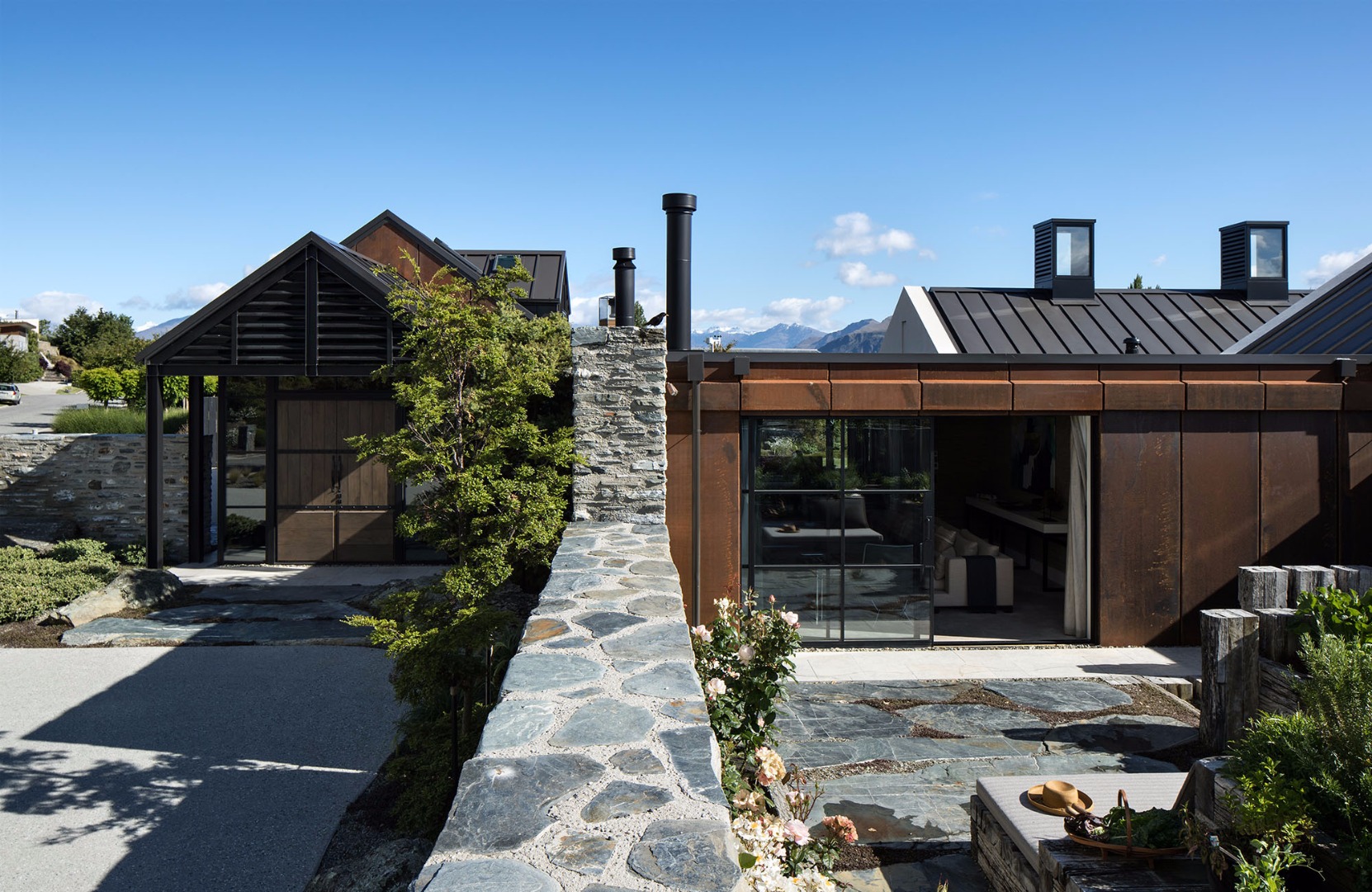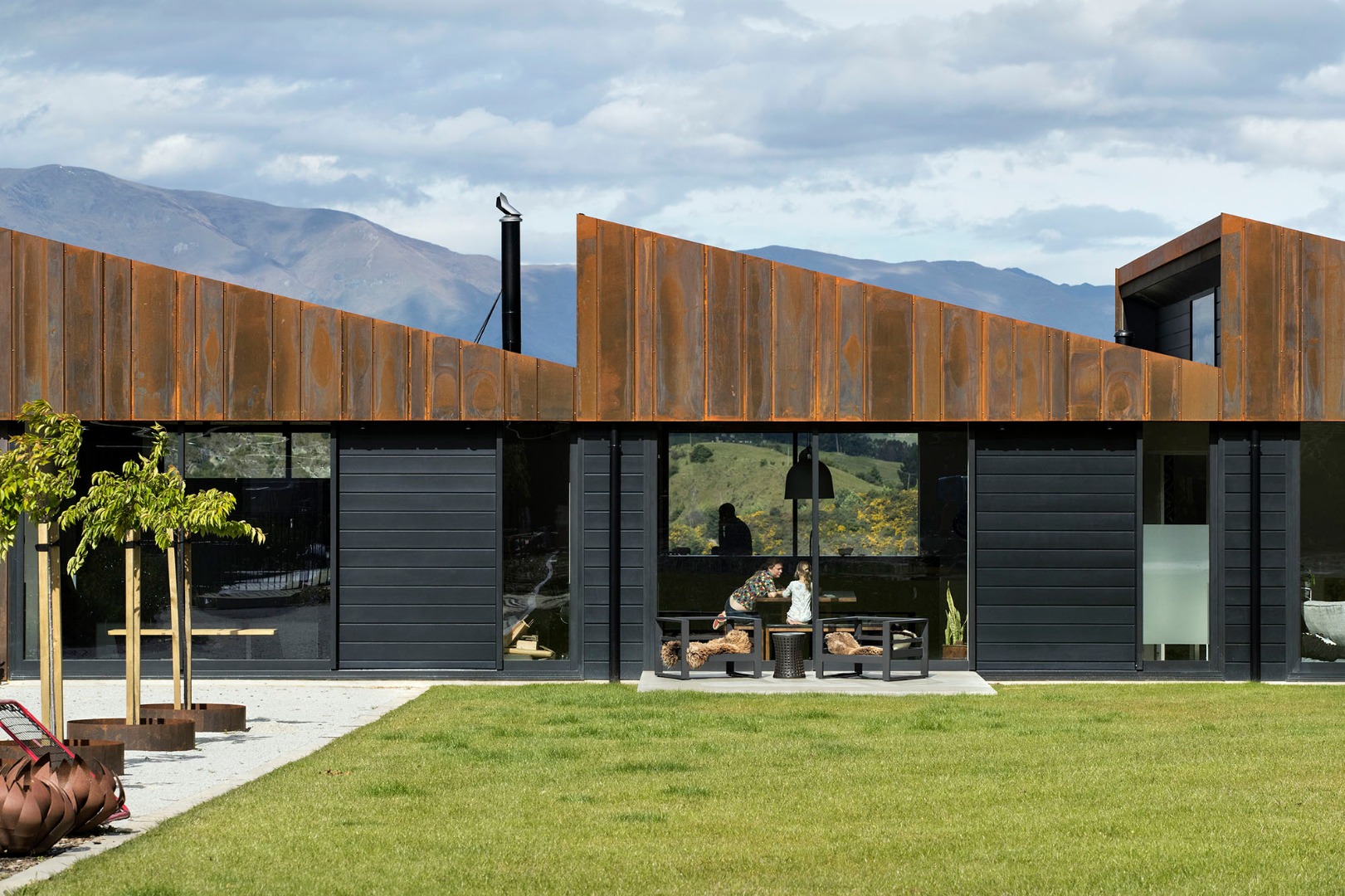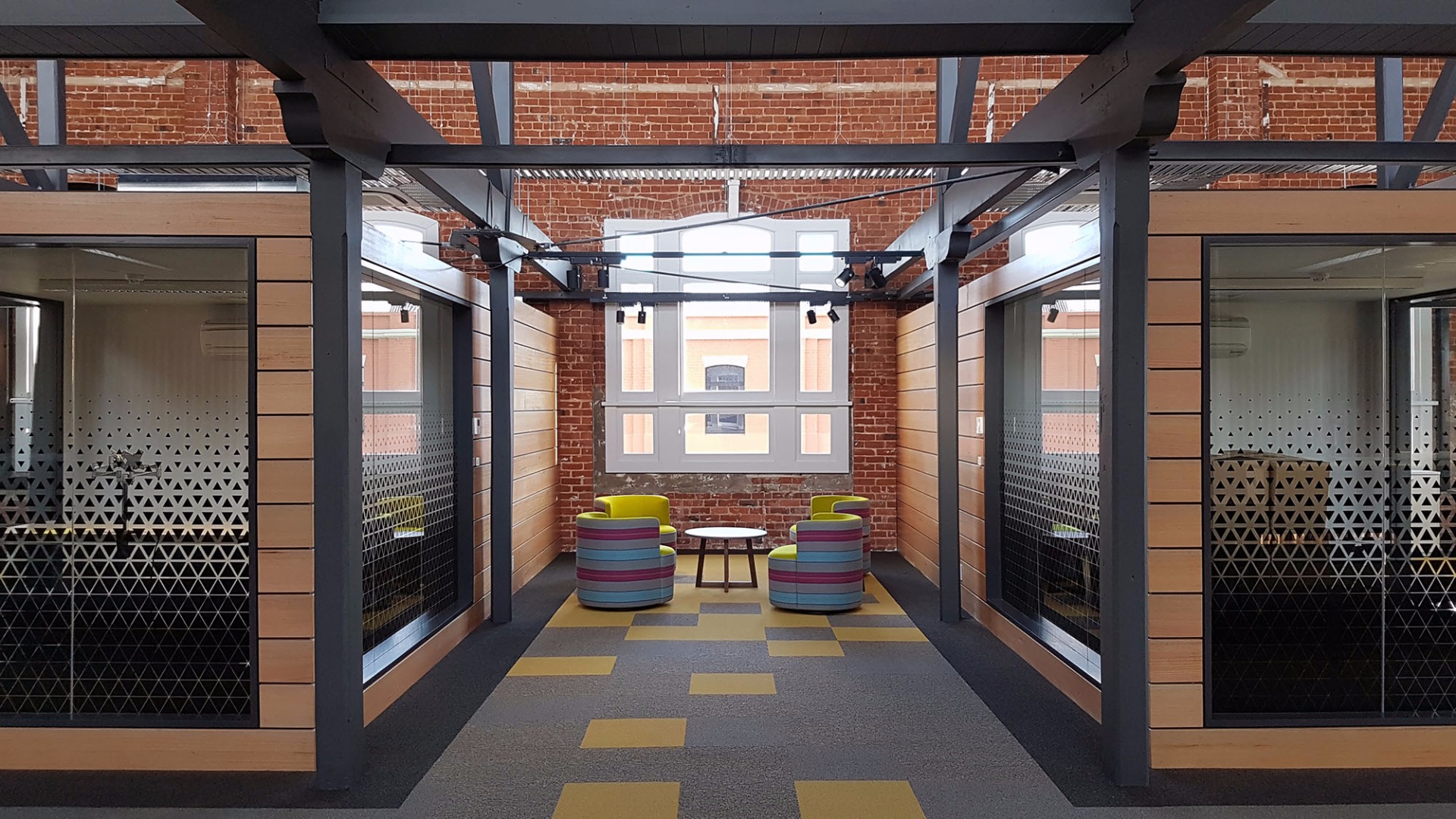Architects who carefully balanced the design of homes in sensitive lakeside areas with sophisticated client briefs have been rewarded at the Southern Architecture Awards held in Queenstown on 9 June.
Of the 17 projects that won awards, 11 were houses. Nine new homes, one addition and alteration project and one small project category impressed a jury convened by Queenstown architect Michael Wyatt. In the housing categories, Wyatt’s jury saw projects where architects had “achieved much with modest budgets”, and projects where “budget was not a constraint – on which architects made the most of their opportunities”.
Full image galleries of all winners are here
With three housing awards, Sumich Chaplin Architects was, overall, the most successful practice in the awards programme. Sumich Chaplin received awards for Closeburn Station, a resort-style dwelling overlooking Lake Wakitipu, a new house at Millbrook and, on the western edge of Lake Wanaka, a house set within a small residential enclave.
“In each instance, the jury was impressed with the practice’s knowledge and mastery of Central Otago’s architectural vernacular and with the ways that the buildings had been manipulated to provide a framework to the scenery beyond,” Wyatt said.
 Bardon House, Sumich Chaplin Architects
Bardon House, Sumich Chaplin Architects
This year’s awards revealed architects working with imagination on residential projects of considerable scale. One of the largest was ‘The Dacha’ – “a generous house designed to take full advantage of an amazing view”, Wyatt said. “The Wanaka house captures the magnificent landscape from every room and throughout the architect has handled scale thoughtfully and with careful attention to details and materiality.”
Arrowtown’s Assembly Architects impressed the jury with two housing projects. Atop a terrace looking across the Shotover River, the ‘Sawtooth’ house – so named for the distinctive roof profile that was designed to maximise winter sun and reduce solar gain in summer – is “logically planned, and reveals an innovative approach to and careful resolution of planning and detail”, Wyatt said.
At Beacon Point, another Assembly Architects house made clever use of a tricky triangular site. “This house can be likened to a piece of joinery. It reveals delightful attention to detail and the handling of space and light,” Wyatt said.
At Hawea Flat, near Wanaka, a house designed by Rafe Maclean Architects was “well-designed for simple living,” the awards jury said. “A modest budget has been no handicap to the achievement of architectural quality.” And near Lake Hayes, a house on Slopehill Road House designed by Team Green Architects reveals the inspiration of sustainable ethics shared by architect and client: “The approach is epitomised by the living area, wonderfully calm within a beautifully proportioned space.”

Sawtooth, Assembly Architects
Smaller projects were also recognised at the awards. A black, metal-clad house designed by Stacey Farrell: Queenstown Architect leans purposefully into an arboreal setting. It was praised by Michael Wyatt as a “successful small house, driven by a clear belief in an architectural idea and executed with considerable panache”.
At Arrowtown, a small historic cottage has been artfully extended by Anna-Marie Chin Architects. The design was praised by the jury for improving the home’s functionality while maintaining the character, texture and quirkiness of the original cottage.
Dunedin- and Queenstown-based practice McAuliffe Stevens Architects was a double-winner in the awards. It won a housing award for a house at Lake Wanaka’s Peninsula Bay. The jury was impressed by the “assembly of sculptural forms, well planned and detailed”, Wyatt said.
This practice was also among the non-residential award winners, with a smart conversion of a former wool store warehouse into accommodation for Dunedin law firm GCA. “The project has been completed with imagination and flair, and the prosperity and success of Dunedin’s Warehouse District is enhanced by the new addition.”

GCA Dunedin, McAuliffe Stevens Architects
Infrastructure and health projects in Invercargill, Dunedin and Wanaka also achieved success this year. Wyatt said that although costs often had been carefully controlled on these projects, restraint had not diminished the architectural quality of the spaces.
“It is the internal feel of the spaces, rather than the exterior appearance, that most lives in my memory. To capture this quality in photography can be quite difficult. We see so many well photographed projects in magazines, but there is no substitute for being there”.
Invercargill Airport, a public architecture award winner by Warren and Mahoney Architects, was praised by Wyatt for “exemplary planning and excellent wayfinding”, while the new Wanaka Volunteer Fire Station designed by Mason and Wales Architects “delighted the client and impressed the visiting jury”. “It exemplifies the value of good architecture applied to a utilitarian use.”
In the design of Manaaki by Mercy, a hospice care and support centre, Dunedin’s McCoy and Wixon Architects solved the challenges of a difficult and confined to create “excellent architecture”. The practice also received a heritage award for the “hugely challenging” restoration of Dunedin’s St Patrick’s Basilica.
“Working closely with the client the architect has successfully effected a dramatic change to the use of the building, and its relationship with the street and other church functions,” Wyatt said.
A Dunedin institution of a much different sort also received the thumbs-up from the jury – Elliot Architect’s clever reworking of Dunedin’s much-loved drinking hole, the Captain Cook Hotel, is a “celebrated piece of the city’s folklore given a new lease of life”, Wyatt said.
Wyatt was joined on this year’s jury by architects Tim Heath, David Hill and Gillian McLeod. The winners of Southern Architecture Awards are eligible for shortlisting in the New Zealand Architecture Awards, the results of which are announced in early November. Resene Paints has been a proud sponsor of the NZIA’s awards programmes since 1991.
Complete list of winners by category:
Full image galleries of all winners are here
Commercial Architecture
Manaaki by Mercy by McCoy and Wixon Architects
Wanaka Fire Station by Mason and Wales Architects
Heritage
Captain Cook Restoration by Elliott Architect
St Patrick’s Basilica by McCoy and Wixon Architects
Housing
Bardon House by Sumich Chaplin Architects
Beacon Point House by Assembly Architects
Closeburn House by Sumich Chaplin Architects
Gardner House by Rafe Maclean Architects
The Dacha by Eliska Lewis Architects
Peninsula Bay House by MacAuliffe Stevens
Millbrook House by Sumich Chaplin Architects
Sawtooth by Assembly Architects
Slopehill Road by Team Green Architects
Housing – Alterations and Additions
Arrow Junction Road Addition by Anna-Marie Chin Architects
Interior Architecture
GCA by McAuliffe Stevens
Public Architecture
Invercargill Airport by Warren and Mahoney Architects
Small Project Architecture
Black House Part One by Stacey Farrell: Queenstown Architect



